Inside Stockton Rush’s Allegedly Rule-Breaking ‘Titan’ Sub — and the Red Flags: 'Catastrophe Waiting to Happen'
- Oops!Something went wrong.Please try again later.
Five people died in the implosion of the 'Titan' near the site of the 'Titanic' shipwreck
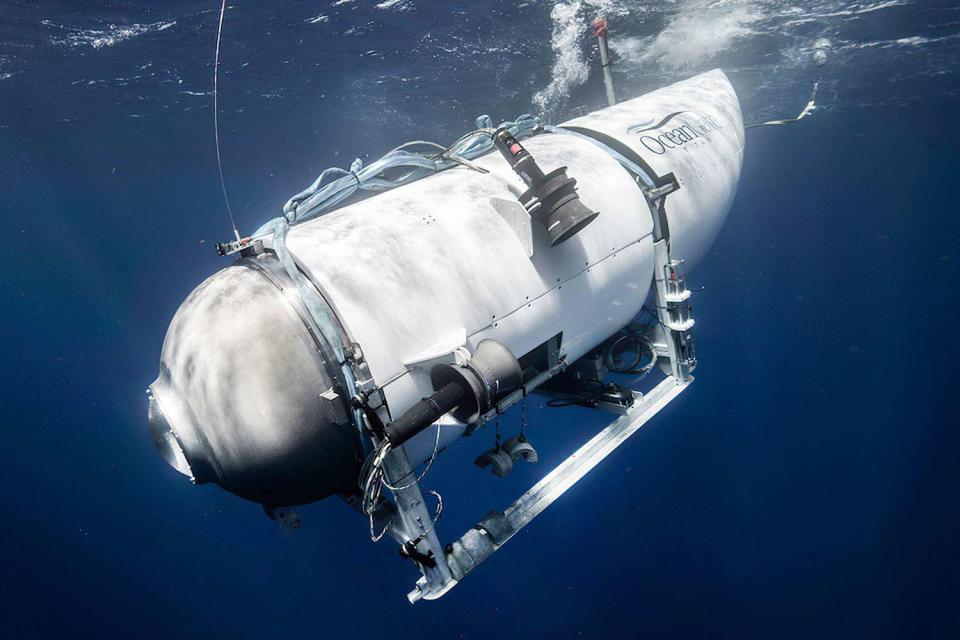
Alamy Stock Photo
Before the Titan submersible’s implosion in the middle of the North Atlantic on Sunday, July 18 — which instantly killed the five people aboard it — questions big and small were raised about the reliability of the experimental vessel.
While taping a segment of CBS Sunday Morning in July 2022 about the Titan and its creator, OceanGate Expeditions founder Stockton Rush, correspondent David Pogue noticed some things that made him take pause.
“There are 18 bolts around the hatch, and the crew bolts you in from the outside,” says Pogue, who talked to PEOPLE for this week's cover story. “And I remember it was odd that they put in only 17 of the 18 bolts. The 18th one is way up high and they don't bother with that one. They say it makes no difference," he claims.
During the segment, which aired in November 2022, Pogue told Rush it seemed like he’d ‘MacGyvered’ or jerry-rigged portions of the submersible he built to navigate the great depths of the ocean.
“I don’t know if I would use that description of it,” Rush replied.
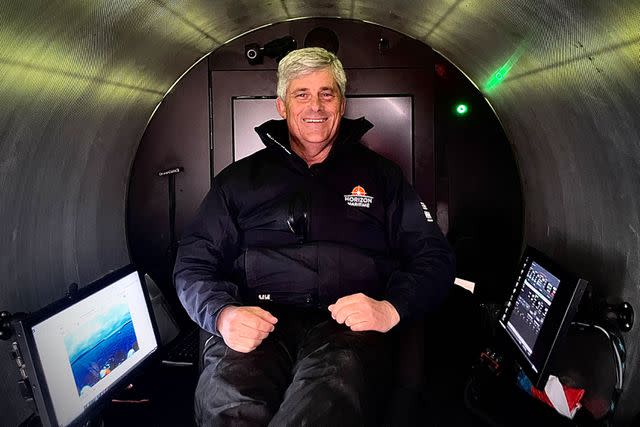
Arnie Weissmann
Stockton Rush inside the TitanPogue, whose Titan trip got canceled because of bad weather, was surprised to learn that Rush used rusty construction poles as ballasts, a ceiling light Rush bought at Camping World and an off-the-shelf game controller to navigate the Titan, 12,500 feet under the ocean to view the Titanic wreck.
“Come on!” Pogue said, laughing out loud when Rush showed him the Logitech controller he used to glide the Titan over the storied wreckage to show passengers the grand staircase and a still-hanging chandelier.
Related: 'Presumed Human Remains' Recovered from 'Titan' Sub Wreckage, Coast Guard Says
“There are certain things that you want to be buttoned-down,” Rush explained, noting that if the lights, controller or thrusters failed, you’d still be safe.
The "pressure vessel,” which was made out of carbon fiber (usually not used for submersibles) “is not MacGyvered at all," he explained.
For more about the Titan's tragic last voyage, subscribe now to PEOPLE or pick up this week's issue, on newsstands Friday.
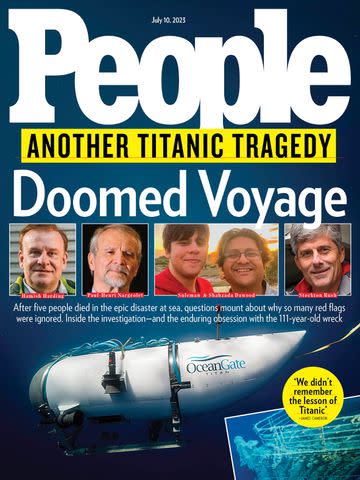
In the wake of tragedy, the durability of the hull and other elements of the one-of-a-kind vessel have been called into question more than ever.
On the morning of June 18, just an hour and 45 minutes after the Titan began its descent into the North Atlantic, its support ship, the Polar Prince, lost communication with Rush and the other four men on board: Titanic expert Paul-Henri Nargeolet, 77; British-Pakistani billionaire Shahzada Dawood, 48, and his 19-year-old son, Suleman; and billionaire British explorer Hamish Harding, 58.
After a massive, four-day search, the U.S. Coast Guard announced on Thursday, June 22 that debris from the Titan had been found 1600 feet from the bow of the Titanic, indicating that it had suffered from a "catastrophic implosion."
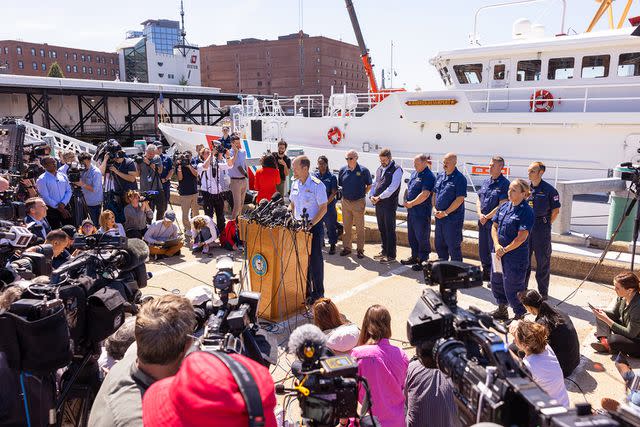
Scott Eisen/Getty
U.S. Coast Guard announces Titan suffered an implosionRetired U.S. Navy Captain Alfred Scott McLaren says he was not surprised that the Titan imploded.
For the past three years, he tells PEOPLE, “I've been advising people under no circumstances go to Titanic on that submersible. I didn't consider it safe because of the way it was constructed and the fact that it had not been tested or certified.”
Unlike other submersibles, the Titan was never certified by a regulatory body and had raised safety concerns in the past.
In 2018, OceanGate employee-turned-whistleblower David Lochridge joined more than 30 industry leaders in urging Rush to have the Titan tested by a third party and have it certified, saying in a letter that the company’s “experimental approach” could lead to “catastrophic” consequences.
Lochridge alleged in a court filing that Rush refused, saying OceanGate was “unwilling to pay” for that.
“Almost all submersibles, submarines and all that are subject to pressure testing, and then certified by the American Bureau of Standards, or Lloyd's or, whomever,” says McLaren, who spent 24 years in submarines, 22 of those years in nuclear submarines.
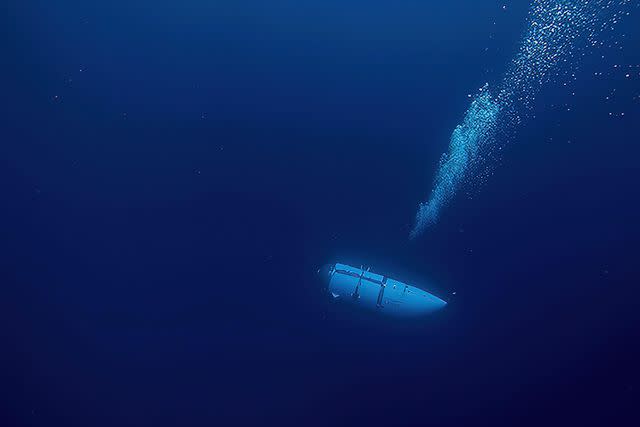
Alamy Stock Photo
'Titan'“I commanded a nuclear attack submarine for four years, my crew and I in 1970, and surveyed the entire, all 3,400 nautical miles of the Siberian Continental shelf under thick ice, shallow water. Do you think I'd want to be there in an untested and uncertified submarine?”
The carbon fiber Rush used to build the hull is believed to degrade in salt water, causing vulnerabilities too small for the eye to detect, experts have said. It had also been known to wear away over time.
Explorer Victor Vescovo — who had gone on expeditions with Nargeolet and to space with Harding — tells PEOPLE, “It was widely acknowledged that the OceanGate submersible had inherent technological risks that made many of us think it was very unsafe. And that it was only a matter of time before there was a potential loss of life incident."

JOEL SAGET/AFP via Getty Images; Alamy; HANDOUT/OceanGate Expeditions/AFP via Getty Images; HANDOUT/DAWOOD HERCULES CORPORATION/AFP via Getty Images (2)
“And PH [Nargeolet] and myself and others spoke to Stockton Rush about this," he adds.
He also told CBS Saturday Morning, “It was widely discussed in the submersible community that this design was so unusual, being a cylinder with different materials."
"It broke many conventions and safety precautions to have spherical pressure vessels made of metal — and so therefore there was a lot of concern that there could be a potential for failure over time," he further claims.
McLaren says he is “heartsick” over the lives lost, but admits, “It was a catastrophe waiting to happen.”
—With reporting by WENDY GROSSMAN KANTOR and GILLIAN TELLING
For more People news, make sure to sign up for our newsletter!
Read the original article on People.

